Minds On
Define and discuss

Define the word conflict in your own words. Share your ideas with peers if possible.
When you’re ready, press the 'Answer' button to reveal a definition of conflict.
A conflict is a serious disagreement, argument, struggle, or battle. For example, to conflict is to disagree with someone who has an opposite opinion from you.
Create a list of conflicts that have occurred in history or modern day. What changes have occurred because of these conflicts?
Press 'Hint' to access additional prompts to help you with this question.
Hint: Can you think of any minor or major battles or wars that have occurred? How did this impact different areas and peoples?
Brainstorm
Conflict and change
Do you notice any relationships between conflict and change? Why do conflicts bring about so much change?

Action
Task 1: Rising tension

Canada has had its share of conflicts between cultures and classes throughout history.
In the years from 1774 to 1867, relationships between governments in Canada were quite tense. Around this time, there was a powerful class of people known as the seigneurial class. The seigneurial class was an institutional form of land distribution established in New France in which rich colonizers rented land to tenants. However, a new class structure was establishing in Canada and the status of the seigneurial class in Lower Canada started to decline. The newly established middle class began to push for change. As this push for change became stronger, conflict arose.
Each colony had its own reasons for rebelling against the British government. There were three underlying causes that applied to both Lower and Upper Canada: lack of voice in government, lack of economic growth, and rising tensions. Let’s explore each underlying cause together.
1. Lack of voice in government

In both Upper and Lower Canada, the governor (who was appointed by Britain) still had control over the daily proceedings of the colony. The governor could essentially overrule any laws or decisions made by the other assemblies. This meant that no people had a voice in government. People were frustrated that only a select group of elite officials (Château Clique and Family Compact) had power. These elite groups rarely wanted to seek input from other people. The people did not have any voice in how the colony was run.
Brainstorm
Review
Consider what you know about the current government structure in Canada. What similarities and differences do you notice when comparing the modern-day governments to the government of Canada in the 1800s?
When you’re ready, press 'Answer' to access a possible answer to this question.
One difference is that people do have some say in modern-day government. Everyone has the right to have a voice in the government (federal and provincial). It is not just an elite group as was the case in 1800s Canada.
One similarity is that in the modern-day, elected government officials make most decisions based on recommendations from council and assemblies. This is similar to Canada during the 1800s. It is important for all people to have a say in the government procedures and policies.
2. Lack of economic growth
Fewer goods were being purchased and traded with Canada during this time. This was due to an economic downfall in Europe. As a result, prices for goods fell and many people in Canada were experiencing difficulties. The people did not feel that the government was doing anything to solve the economic issues that were facing Upper and Lower Canada. In 1837, an economic depression hit the United States, Great Britain, and Canada. In Lower Canada, taxes and rents were being raised by landowners. This put more pressure on the citizens. People in Lower Canada felt there needed to be more canals built to create economic opportunity, but the government wasn’t listening.
Brainstorm
Review

Why do you believe it is important that all people have a say in what the government does for a country?
3. Rising tensions

In Lower Canada, the French-speaking and Roman Catholic majority, represented by the Parti Canadien (later called the Parti Patriote) grew convinced that the English-speaking, Protestant Château Clique (representing Upper Canada) wanted to destroy their lives. They strongly resented the non-French immigrants. They believed that these immigrants were to blame for an outbreak of cholera and typhoid in Montreal. This rising tension continued to create conflict for Upper and Lower Canada.
Task 2: Rebellions in Lower Canada
Student Tips
Background: The Parti Patriote
The Parti Patriote (also known as the Parti Canadien) was a French political party founded by members of Lower Canada. It was made up of liberal professionals and small-scale merchants. This party represented a strong sense of French-Canadian nationalism and favoured agriculture over commercialism.

In the rebellion in Lower Canada, the Anglo-Scottish community had the most power, as they supported the British governor, and they refused to share power. The Parti Patriote took action and attempted to take over. Their goal was to create an independent nation under the leadership of Louis-Joseph Papineau. Papineau was a lawyer and member of the legislative assembly. In 1815 he became the leader of the Legislative assembly and in 1837 he led the rebellion movement in Lower Canada.
There were three major battles that took place during the Rebellions of Lower Canada: The Battle of St. Denis, The Battle of St. Charles, and The Battle of St. Eustache. Explore each of these battles in the following section.
As you read about these battles, make jot notes in a method of your choice. Record significant and specific places, people, and events that you notice.
Press the following tabs to access information about the three battles.
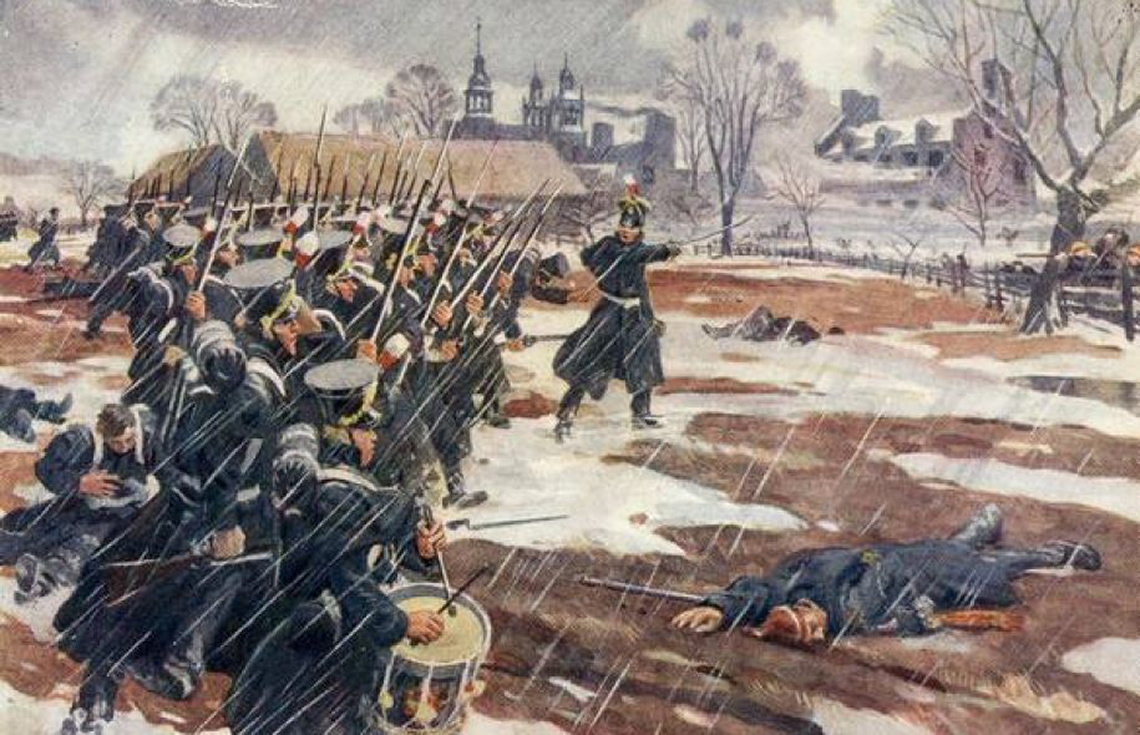
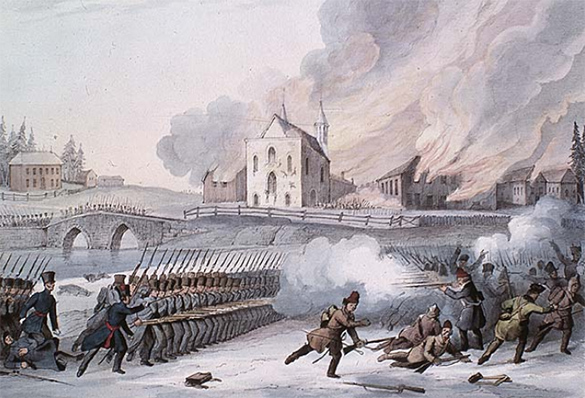
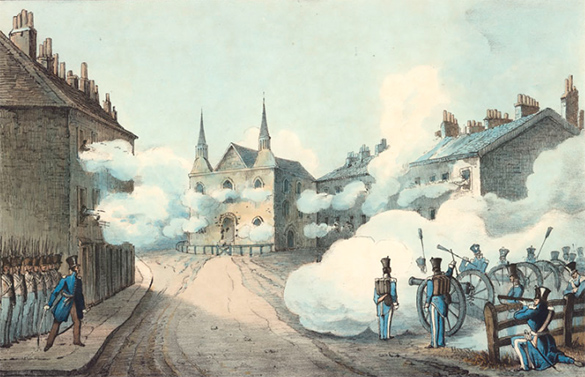
Task 3: Rebellions in Upper Canada
The rebellions in Lower Canada inspired Anglophone radicals in Upper Canada to also take action against the British Crown led by William Lyon Mackenzie. This revolt was much smaller than the rebellions of Lower Canada.

Mackenzie and many of his followers were recent immigrants from Great Britain. They were already hostile to the British upper classes and the Anglican church. Like those in Lower Canada, Mackenzie and his followers despised the elite class, called “The Family Compact.” The Family Compact denied Mackenzie and his followers their political rights. Mackenzie had a newspaper called “The Colonial Advocate” where he targeted Tory opponents. In one instance, men from the Family Compact stormed Mackenzie’s office and threw his printing press in the water. This angered Mackenzie and his radical followers even more.
After failed attempts at peaceful change, Mackenzie convinced his followers to try and seize control of the British government. He led a band of rebels down Yonge Street in Toronto in an attempt to overthrow the government. They exchanged gunfire with a small group of militia loyal to the Crown. The rebels were quickly defeated, and Mackenzie fled to the United States where he lived in exile.
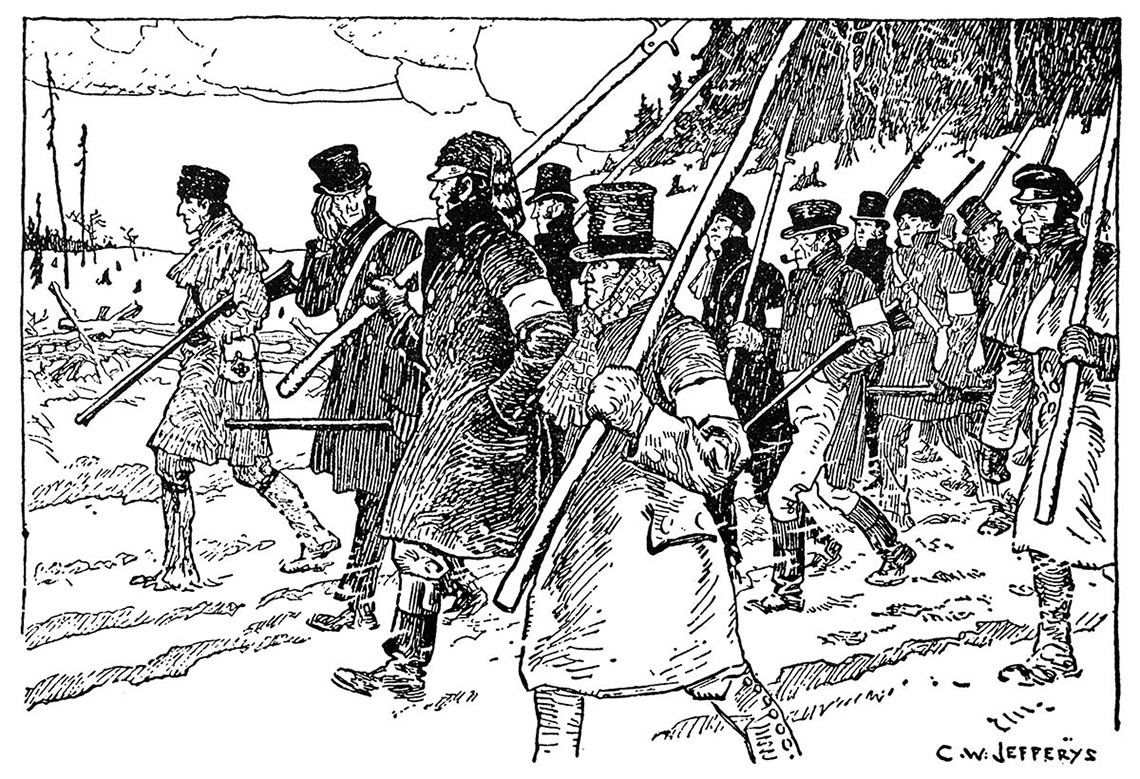
Source: Belshaw, J. D. (2015, April 13). 11.10 Rebellions, 1837-38. Canadian History PreConfederation. https://opentextbc.ca/preconfederation/chapter/11-10-rebellions-1837-38/.
Test your knowledge
Complete the following fillable and printable Rebellions in Canada Matching Activity. For this activity, you will be placing significant people, places, and events from the ‘Word Bank’ into the appropriate category. The categories are Upper Canada, Lower Canada, or Both. Some items will belong under the category “Both.”
| Lower Canada Rebellions | Both | Upper Canada Rebellions |
|---|---|---|
Press the ‘Activity’ button to access Rebellions in Canada Matching Activity.
When you are ready, press the ‘Answers’ button to access the answers to the Rebellions in Canada Matching Activity.
| Lower Canada Rebellions | Both | Upper Canada Rebellions |
|---|---|---|
|
|
|
Task 4: Consequences
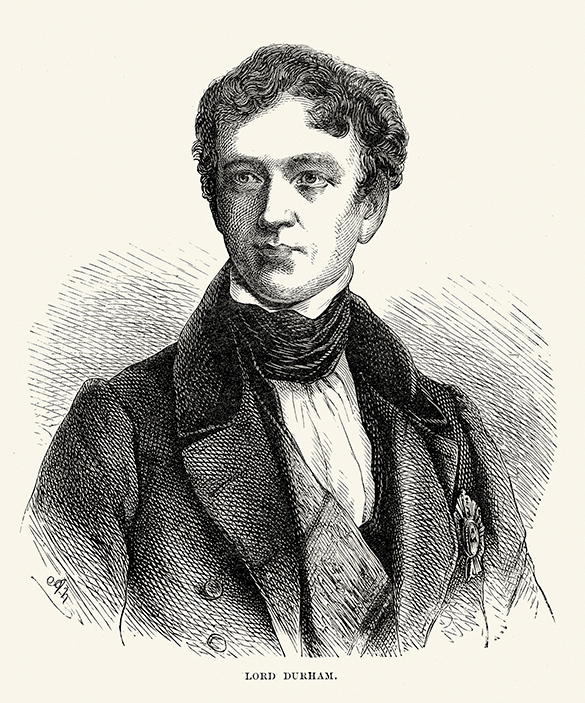
Although the rebellions of Upper and Lower Canada failed for the rebels, it did raise concern among the British government. In response to the rebellions, the British government sent Lord Durham to investigate the causes of the rebellions. He spent four months in Canada and then resigned his position after a dispute with Britain. In his final report, called “The Durham Report” he made three recommendations:
- The colonies of Upper and Lower Canada should be merged into one colony with an English-speaking majority.
- French people and culture should be assimilated into the British language and culture.
- A responsible government should be implemented in the new colony, giving citizens a voice in government through an elected assembly.
:Initially, Britain agreed to the union, but not to responsible government. The Act of Union was established in 1841 and united Upper and Lower Canada into one united colony, named the Province of Canada. The two areas were now called Canada East (previously Lower) and Canada West (previously Upper). The Act of Union had several provisions:
- The two regions' debts were consolidated into one.
- The French language was banished from official government use.
- A new government structure was established that had equal seats in Parliament, and they had to work together to get new laws passed.
Brainstorm
Think about it!
Consider what you just learned about the new Act of Union.
- Do you predict any conflicts that could arise with the new provisions in Canada?
- What was the same for Canada and what had changed with the Act of Union?
- How do you predict this will impact Canada's future?
As you may have predicted, Canada East and Canada West still had very different interests, languages, and religions. This made it increasingly difficult to cooperate and reach agreements in Parliament. This created a political deadlock. As a result of this political deadlock, responsible government was introduced.
Access the following Heritage Minute video to learn more about responsible government.
Responsible government is a government that is responsible to the people. It takes the form of a Cabinet that depends on the support to an elected assembly. Responsible government was the foundation for Canadians to get control of their own political concerns.
Consolidation
Task 1: Review

Over the course of this learning activity, you have investigated rebellions in Lower and Upper Canada and how they eventually led to the formation of responsible government.
Respond to the following questions using a method of your choice:
- What were some of the issues that led to the rebellions of 1837?
- What was the significance of the rebellions for Canadian political history?
Task 2: Create a primary source
A primary source is an original material, regardless of format, that offers direct testimony or evidence about a historical topic. For this task, you will be creating a new primary source that captures the historical perspective of a time and place that you learned about in this learning activity. Your task is to create something you imagine would have been a primary source document during that time period.
The following chart will help you decide what format you would like to create for your primary source. Consider what audience you will be sharing this with. The chart will also help you decide what topic you would like to discuss. Use information from this learning activity to guide your primary source creation.
| Format (choose one) | Topic (choose one) |
|---|---|
|
|
Reflection
As you read the following descriptions, select the one that best describes your current understanding of the learning in this activity. Press the corresponding button once you have made your choice.
I feel...
Now, expand on your ideas by recording your thoughts using a voice recorder, speech-to-text, or writing tool.
When you review your notes on this learning activity later, reflect on whether you would select a different description based on your further review of the material in this learning activity.